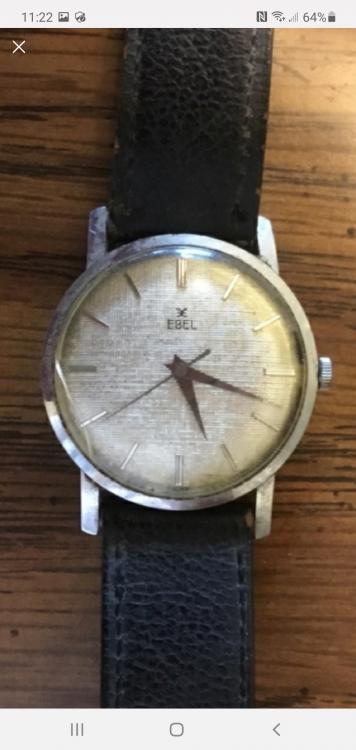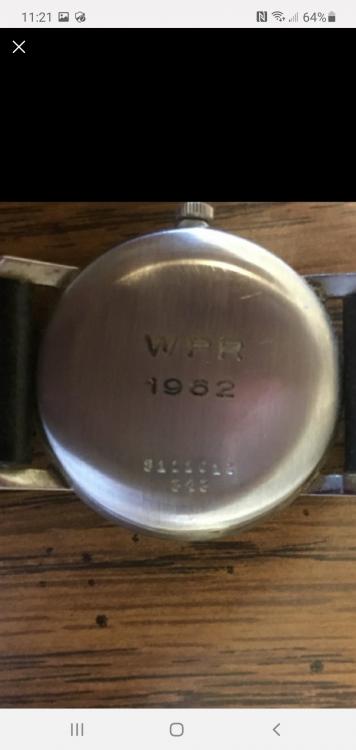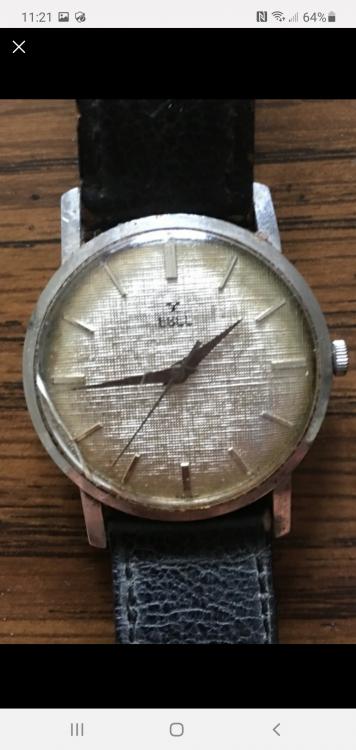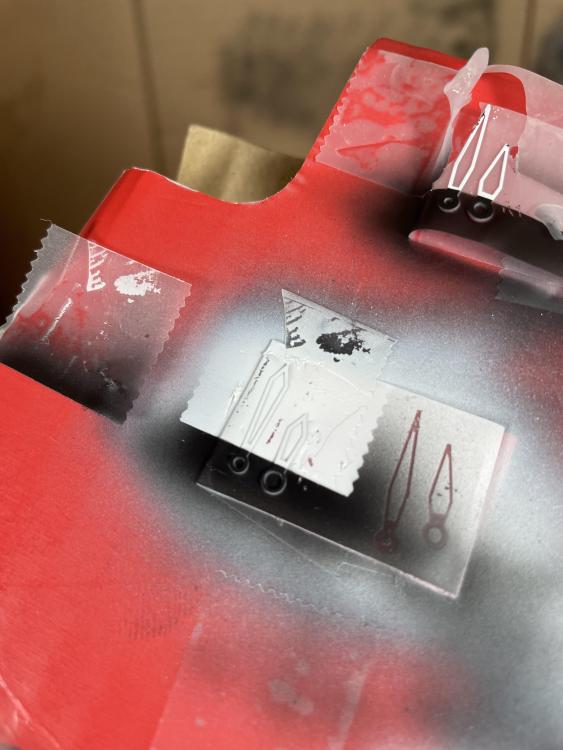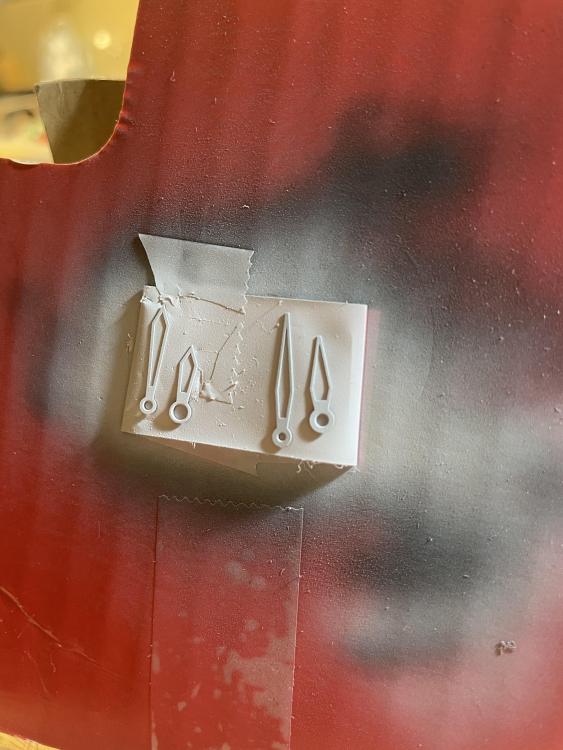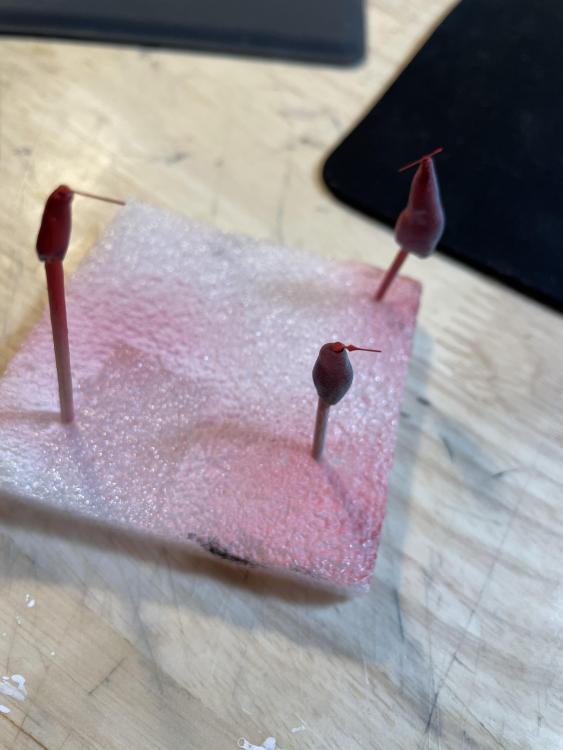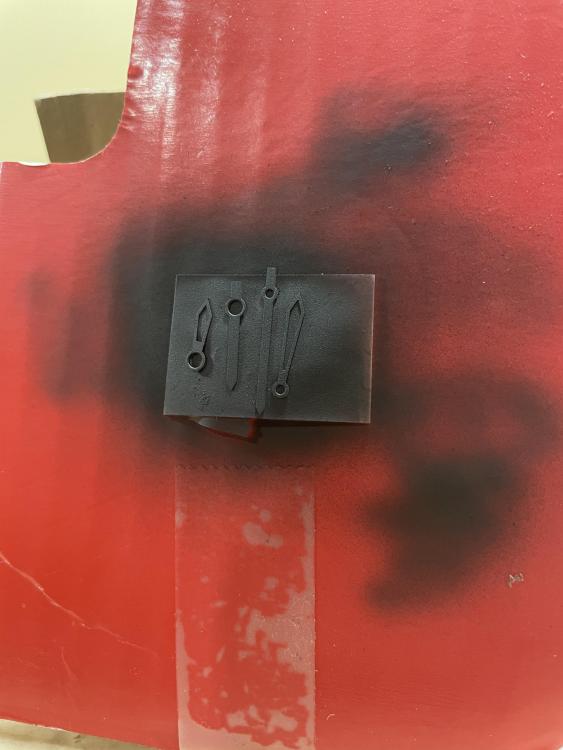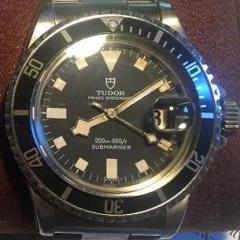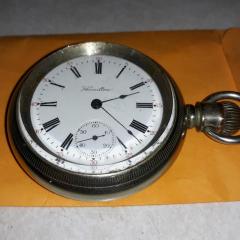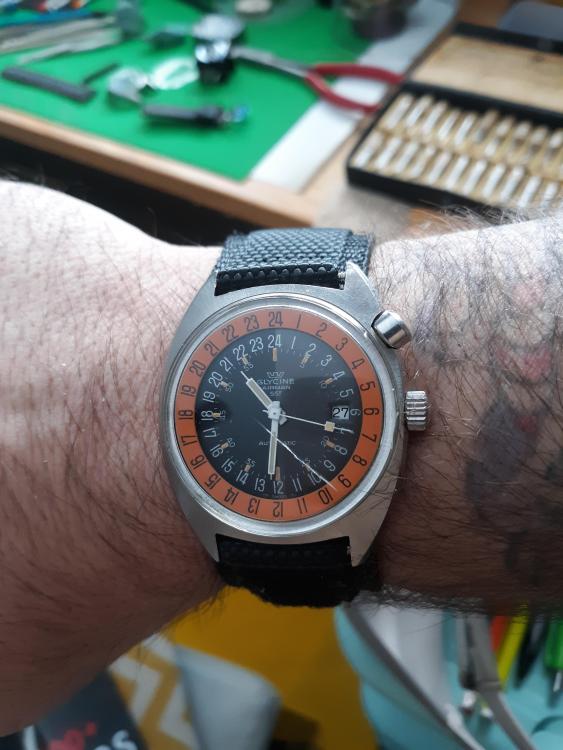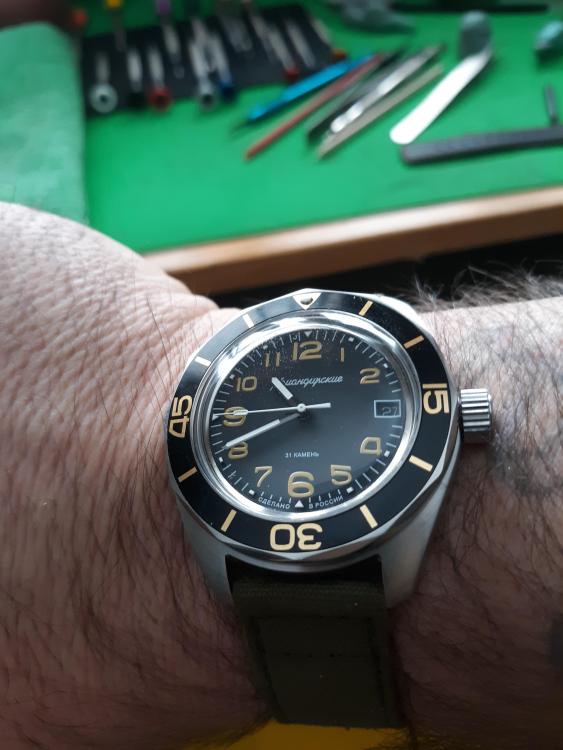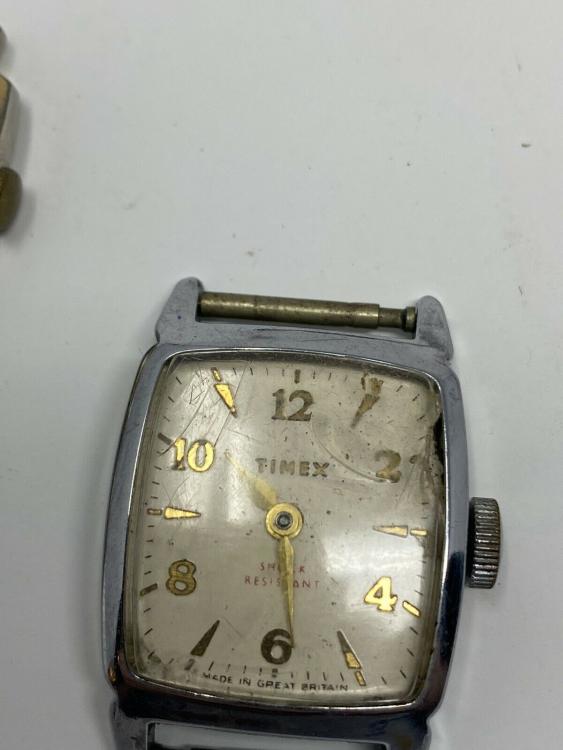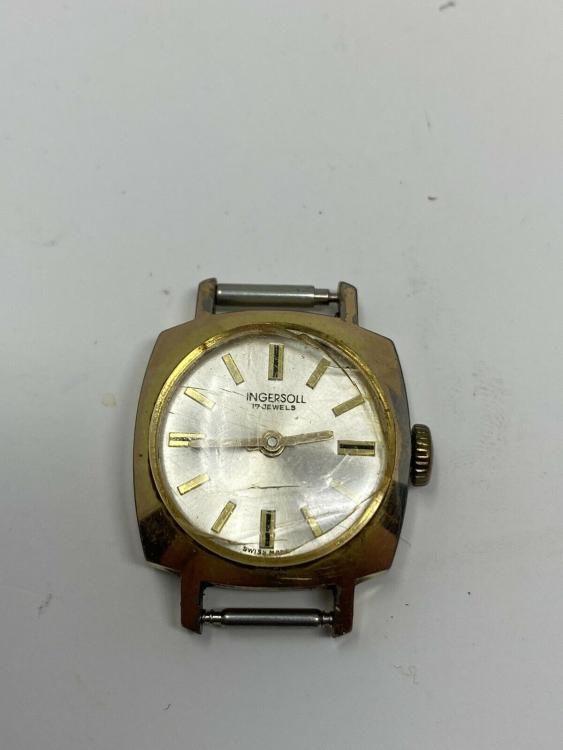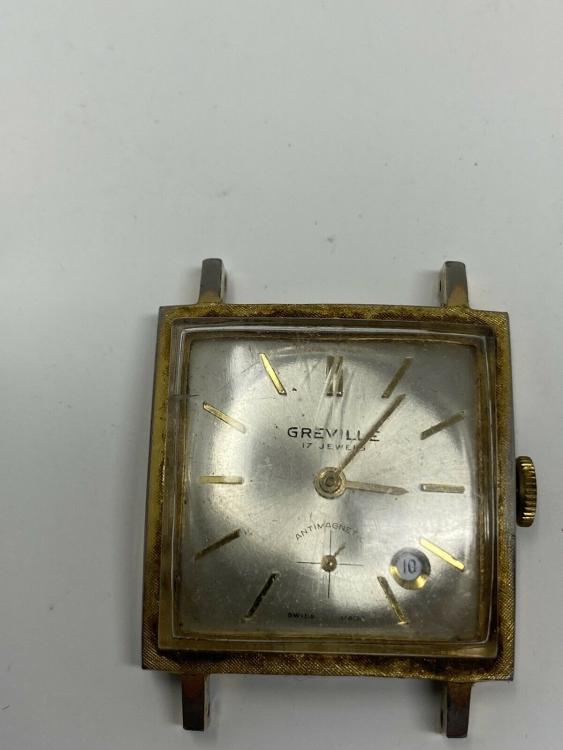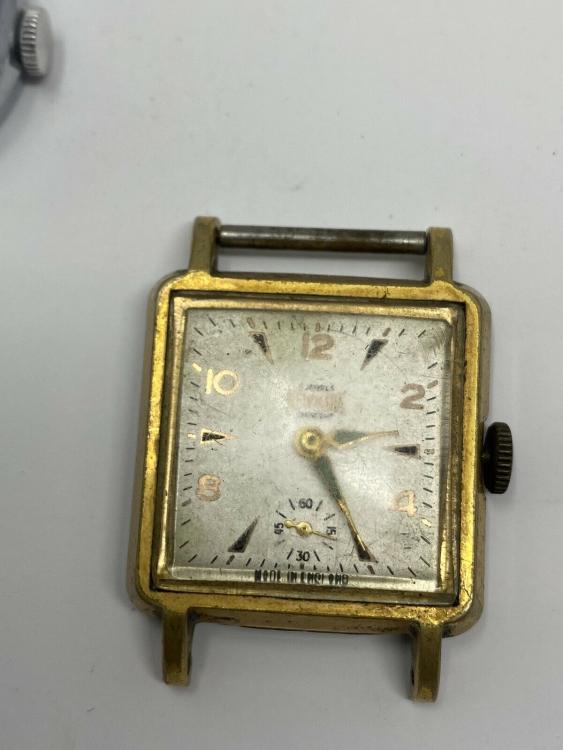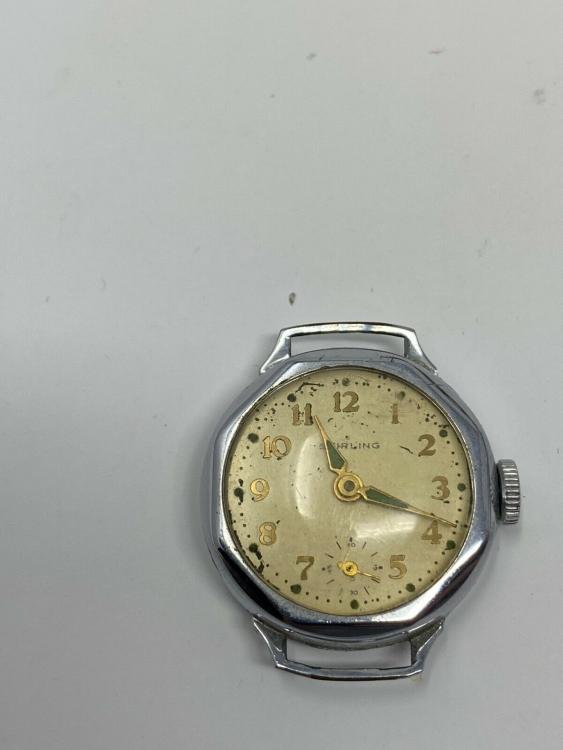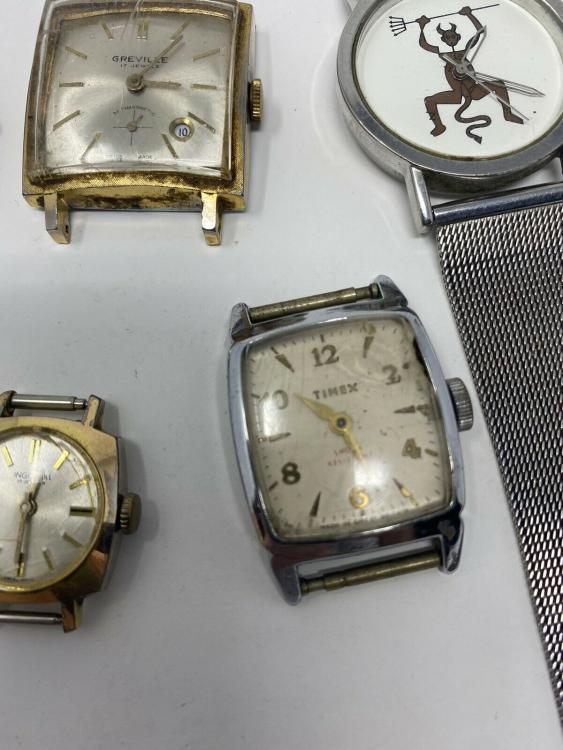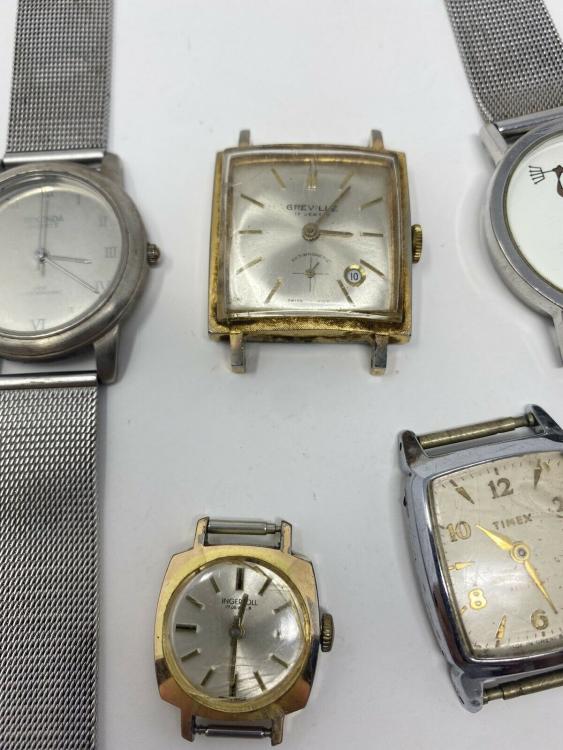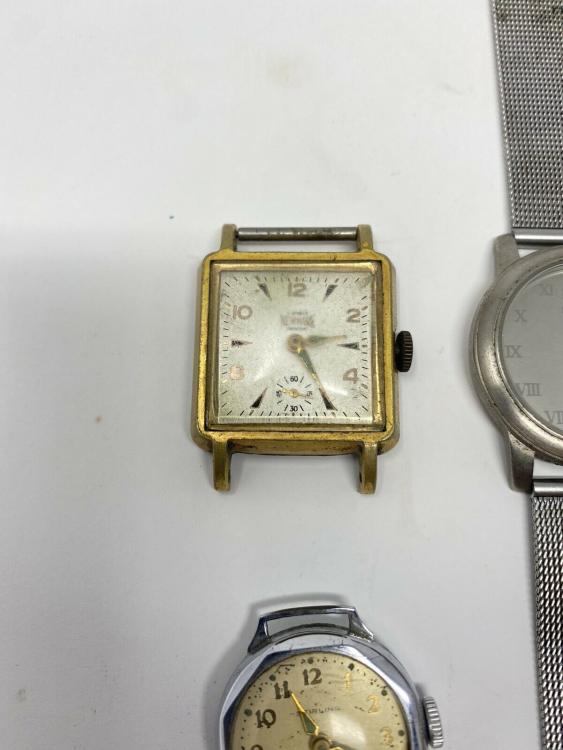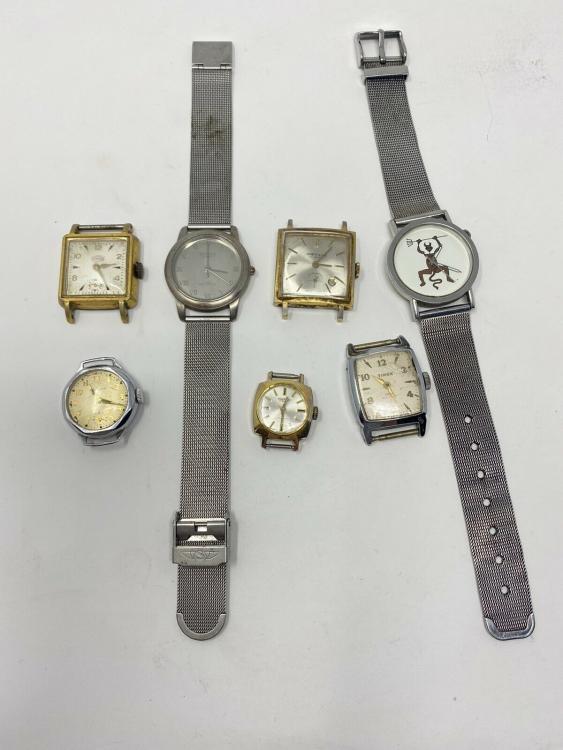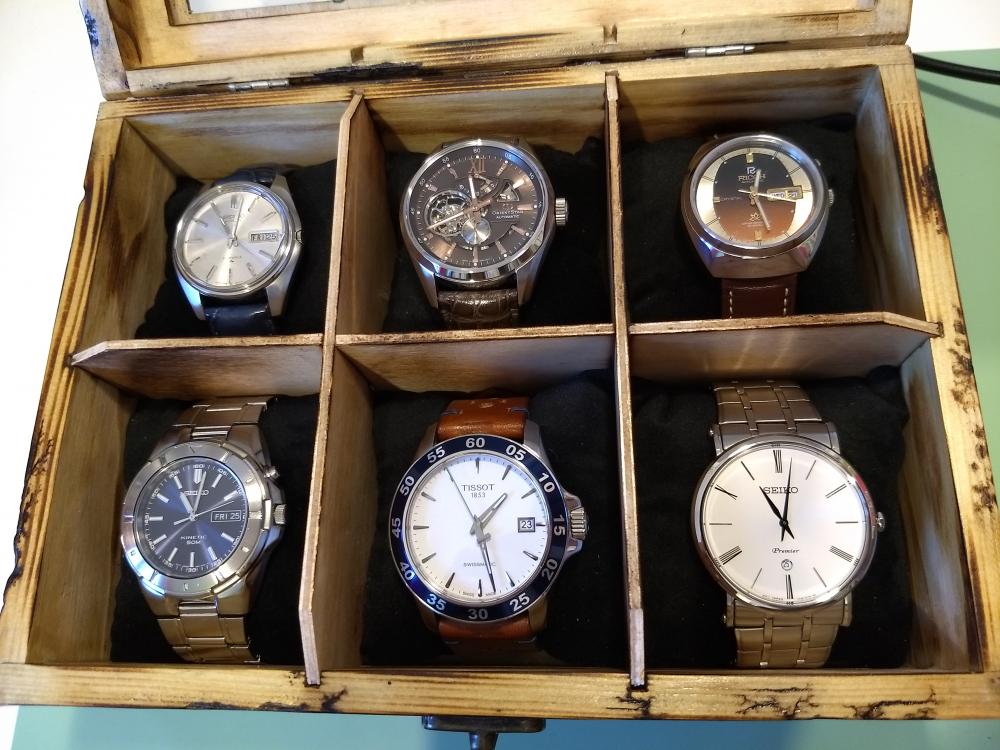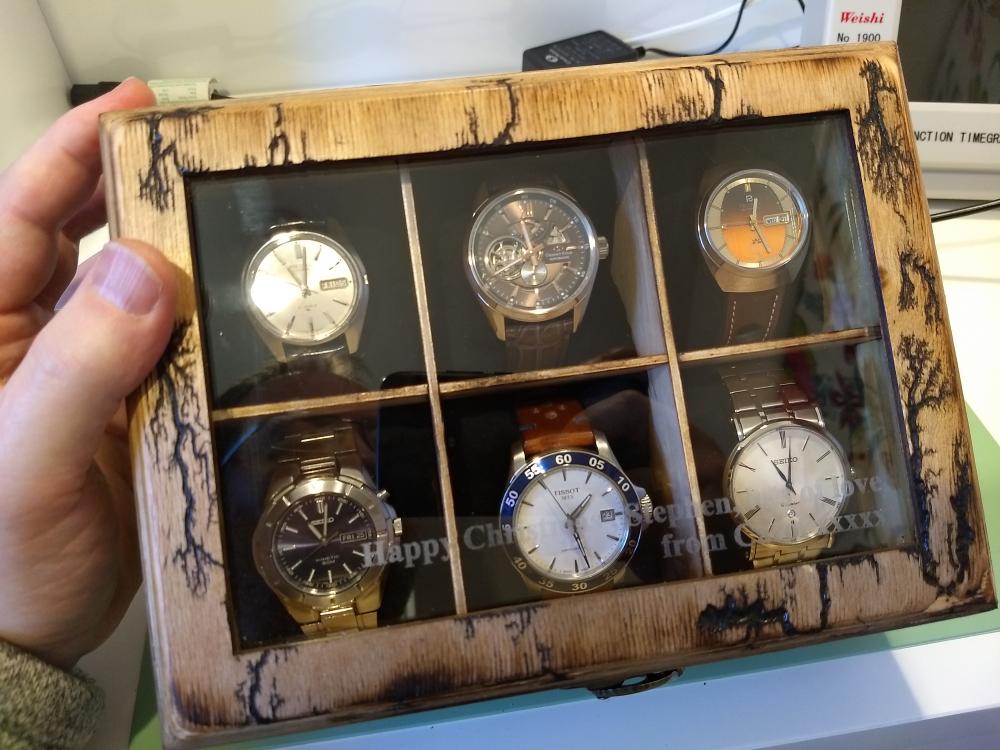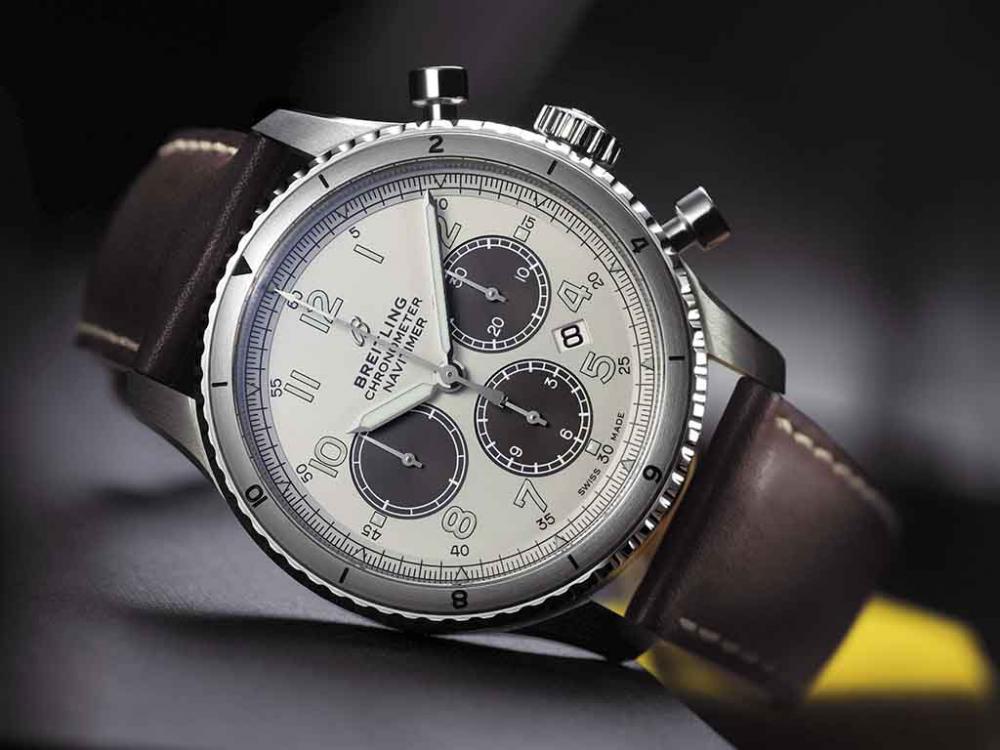Leaderboard
Popular Content
Showing content with the highest reputation on 12/28/20 in all areas
-
Here's few tips on these subjects by a master watchmaker. Slotting For certain things a circular saw is the cleanest. Small screws might have slots of 0.10mm. In general they'll be between 0.15-0.13. But you'll need a way to hold the screw and the saw precisely, so at a minimum a lathe with a milling attachment. It's a lot of trouble for a one off screw. I've grabbed up screwhead files any time I've seen them over the years. Very handy. For larger screws you can often slot with a jeweler's saw or hacksaw. Blueing The most traditional is simply heat blueing, you can get a very dark nice blue this way. If you want a blacker blue but still a hint of blue there are techniques used by gunsmiths but they're quite dangerous. Any "cold blue" chemical treatment tends toward pure black (well, very dark grey), and aren't as tenacious as methods involving heat and caustic chemicals. In WOSTEP they would use a molten salt bath sometimes. This produces a very even blue but it's more pale than a simple heat blue. Also very dangerous as the bath is over 200 degrees as I recall. A spill would be disastrous, as would a drop of sweat hitting the bath. One way to get black, more fore machine parts, is old motor oil. Heat the part below whatever tempering temp you use, dip in oil. You can repeat this and even ignite the oil on the part. It isn't always perfectly even, but can be quite pleasing, almost like the mottled effect seen on parts that were case hardened. Case hardening involves packing low carbon steel parts in a sealable steel box with bone charcoal and holding it at critical temperature for some hours.4 points
-
3 points
-
Maybe it's just me, but so far I had zero problems manually holding crystals of all materials and shapes, for polishing with either a bench motor, or a buff stick. It's just the pain that is slow to go away ?2 points
-
I would be curious as to whether that actually occurs today? The Swiss American Watchmakers Training Alliance (SAWTA) Which replaced wostep in the US at least at some of the schools as far as I know still is teaching vibrating hairsprings What's interesting is not all schools teaching watchmaking hand vibrate hairsprings. here's an interesting video of a school there making a watch and then we get shortchanged on the hand vibrating. At five minutes 39 seconds that does not look like hand vibrating at all does it? https://youtu.be/KJQIw8Az1Xk I really like the description it says is for manual counting? https://www.greinervibrograf.ch/en/Spiromat/Spiromat-Classic.htm Here's an interesting video showing how to do a Breguet hairspring In a school so there's still teaching it sort of? You normally wouldn't do it sort of the way they're doing it because that is a really big heavy hairspring. In other words that's not your normal hairspring. But there's still learning the concept. https://youtu.be/4ddWRl_NVTE Then I found a few links related they hairspring vibrating http://www.bobinchak.com/watchmaking/2017/4/26/hairspring-week-vibrating-the-hairspring https://watchmakingjourney.com/2014/12/23/second-semester-final-project-vibrating-a-hairspring/2 points
-
1 point
-
It sometimes amazes me the condition watches get into. This is a friend's pocket watch; no hands, no crystal, signs of moisture in the movement. I am wondering if anyone is knowledgeable about this maker-A Thomas of Aldersgate Street. I haven't yet been able to ascertain the date of manufacture from the hallmarks. Happ new year to all.1 point
-
you really think I have a strict view? Yes I do have a electronic timing machine I have a small collection of them. my favorite one on the bench at home is the witschi watch expert two. then at work we have a nifty witschi machine with a full automatic microphone six position timekeeping I really like that even for vintage watches. You really don't know me very well I love technology. By the way did you notice and I'm going to quote something? don't you find the word torture a rather strange word to use here? to refresh my memory I re-watched the school video and here's my problem. They spent three years with the extreme emphasis on traditional hand making. In the entire video the obsession is traditional hand methods. Then rather than hand vibrating the traditional way they use a machine. Yes it's definitely cheating and it's not the traditional method. to keep this short what you're seeing with me is an irritation? My irritation is technology can do wonderful things for us even in watch repair. But so many people embrace what they perceive are the traditional hand methods and they totally close their minds to technology. in a discussion with people it's almost like good versus evil with no middle ground which is sad. now back to vibrating hairspring traditionally vibrating a hairspring involves using a hairspring vibrating tool occasionally they come up on eBay. Unfortunately they look nifty, nifty looking watch tools usually have nifty undesirable prices. then if you get your nifty hairspring vibrating tool which by the way I know how to use which is why use the word torture. it's a time-consuming tedious process to learn how to use the tool. timing machines? If we go very far beyond the range of our conventional timing machines they would get confused. If you have a witschi machine it will measure beats per hour is not a problem. Unfortunately witschi machines are expensive. Clock repair people have machines that will do it but they are still expensive. Although they do come up for sale on eBay occasionally. Then the way I think of this entire discussion is DIY and whatever we discuss should be able be repeated by anyone on this group. So basically we need an electronic timing machine that measures beats per hours. We could modify something existing perhaps like an optical tachometer. I was looking for one a couple weeks ago and I was looking at Arduino as a friend somebody probably already is done such a thing. Sure enough I found somebody that made one. Sousing the Arduino platform because it's readily available the boards are super cheap on eBay that would be an option. then holding the hairspring and balance wheel? That doesn't have to be complicated either. You just need a way of holding the tweezer and its holding the hairspring. I think I saw something simple and one of the books I was looking at yesterday if anyone's interested I'll go and find it later today just let me know. Otherwise just a way to hold your tweezers and we don't need any fancy spinning base. Although that would be nifty we can probably 3-D print something and the stepping motor. But you really don't need all that as we just use a puff of air to spin the balance wheel and pick it up optically. Does not like anyone's going to be vibrating thousands of hairsprings it doesn't have to be super fancy that could be or should be relatively simple.1 point
-
You might be able to peen the underside in a couple places using a prick in the staking set. Set the bottom plate so there is not a hole under the top plate (or put some stout plastic there), and then peen just the flange on the underside. NOTE: don't use the pointed alignment tool for peening! It may require making a stake with a small enough taper to be sure it clears everything else- I don't know exactly what that underside looks like.1 point
-
Exactly how it works. Years ago I owned the older version w/ tube electronics. The sensing unit was basically the same. A very strict view. You use an electronic timing machine today, don't you? Personally I never liked the single-bph mechanical balance box of the Luthy. I also found its rate changes dramatically with amplitude. In one of your above videos they test at about 50 degrees. Far away and far off by rate from 270 degrees! Frank1 point
-
The company entirely rearrange their website but I did manage to find the manual for the machine. I still think the descriptions not quite right. Apparently the machine works by supplying a puff of air. Causing the balance wheel to oscillate As it oscillates it also moves up and down and A Sapphire Plate. the machine pics that up. I really think there depriving the students who worked so hard to make their watch of hand vibrating. It still seems like cheating to use an electronic method versus the traditional.1 point
-
Imho it is basically the same as counting with a Luthy, but it is the most comfortable way of manual counting. However some schools use a Luthy with the more modern electronic box connected to Witschi WE or to PC. Frank1 point
-
Basically the video shows the classic hairspring vibrating tool used to torture students in watch schools. One minor problem with the above link is that the vibrating tool platform with the master balance comes in two forms. The ones like above or you do not see the balance you only see an indicator arm. Or the one that you see the balance wheel. Then the platform comes in different frequencies. You'll notice that each of the master balance wheels as a stopping mechanism so you can stop it from oscillating. This way when you start both of them they both will start at the same time. I'm reasonably sure there's a spring in the base but it's been so long since I've used one of these. So in other words you push down the lever and release the spring polls it back and that's what starts the balance wheel oscillating. So I found a number of video is for you. The first one slightly misleading because he starts in slow motion later he'll go to full speed. https://youtu.be/GSIOZCwlimQ This video shows a happy student as they hairspring is matched in frequency to the master balance wheel. Notice how long they say synchronize together https://youtu.be/M5LEN66vxgc Another video he shows they hairsprings out a sink and then later in sync. https://youtu.be/yWHm9YOrGqE Then hairspring vibrating tools don't exist anymore except on eBay at bizarrely interesting prices. So somebody has made his own. You'll notice it's using an optical pickup. https://youtu.be/htckrH3ae54 Then in this link we do get a confirmation that in the base is a spring. He has a interesting story he ends up with part of the tool and then makes an electronic replacement for the platform. The other reason I gave you the link for this is a makes a reference to the Microset timing machine. You can order a hairspring vibrating pickup for that which he shows in his discussion. https://watchmaking.weebly.com/hairspring-vibrating-tool.html Now I'm going to just toss out ideas and thoughts one of the downfalls of Chinese timing machines are there missing a couple of really nice features that witschi has. But you really can't complain at a fraction of the cost of a witschi machine. Specifically most of the witschi machines have the ability to measure the beats per hour or frequency of the balance wheel. Very handy when you're having bizarre timing issues like comes up quite a bit when I'm working on pocket watches. Also handy when you're trying to vibrated hairspring and you're going to be far enough away from its normal frequency that the normal timing machine probably won't be at the time it. Other places where you find timing machines that measure beats per hour are clock makers machines. Typically that's the standard way they time clocks is by measuring the beats per hour. Then you have a variety of ways of taking up the oscillation like optical which came up above. There's also audio? You'll notice when they hairspring is in the vibrating tool oscillating back and forth as they hairspring coils up the balance wheel actually lift up and can't make a ticking sound on whatever it's normally resting on. If you looked at the school videos of the fancy machine they were using that's how it picks up the frequency of the balance wheel. A very long time ago there was a paper tape timing machine that had a microphone that would let you hold a pair of tweezers. Specifically designed to hold the tweezers and the balance wheel so you could vibrate a hairspring that way. So as it went up and down it would make a ticking the sound for the microphone the pickup. Plan as Nucejoe As pointed out you can use a watch for vibrating hairspring. But it also if it's very far out back to needing something that will measure beats per hour. At the next link another reference scroll down to the Bulova school book section Seven vibrating a hairspring. Then look they even have a section on over coil's. https://mybulova.com/vintage-bulova-catalogs This will get you started probably generate more questions. One of the downfalls of the Chinese timing machines are there missing a couple of features found on witschi timing machines. Namely one of my favorite is frequency mode. I tend to use it a lot on pocket watches that have timing issues where there so far out that the conventional machine even witschi can't guess the frequency. Then you go to frequency mode in it will tell you how many beats per hour it's oscillating. With the exception of expensive witschi machines we also have clockmakers timing machines they typically a measure beats per hour. If you are measuring the oscillation electronically if you notice in one of the videos above I think it's the one worry is the finished hairspring. All of them will show what but is it I believe showed it better when she is when you're vibrating a hairspring it tends to also go up and down as they hairspring coils up. There was an early paper tape machine and had a interesting microphone that allowed it to hold a tweezer which would hold your hairspring. I don't remember how you gave the balance wheel LePore she might haveused a puff of air. In any case1 point
-
Lepine was most well known for inventing what is essentially the modern watch caliber, doing away with double plates and pillars and very notably the fusee. This made a huge splash in watchmaking at the time, and he was quite famous. This is a fusee watch, most likely verge escapement, and looks a little more modern than a verge fusee that would have predated Lepine's invention. It could be from his workshop, or could be a fake (faking watches has been going on for hundreds of years). I'd need to dig in to some books to have a better idea. Even as a fake it is of some interest, just as fake artwork often has its own merits. They couldn't order case dial hands and movement from china for the cost of lunch back then- any watch was a valuable object! The wikipedia on Lepine is surprisingly thorough https://en.m.wikipedia.org/wiki/Jean-Antoine_Lépine1 point
-
Interesting post/s and I agree hairsprings are extremely difficult to source I have many many hairsprings in my stash yet I never seem to have one that fits. Manipulating the damaged hairsprings is our only option.1 point
-
As mentioned above already it is not a good idea for an owner to try to replace a Seiko balance complete. It does not make sense economically; a complete SII NH36 mov.t is practically the same cost. and It is risky for a beginner to replace the end stud into the arm; damage to the (new) hairspring can easily occour. The OP can try that himself on the broken part. There are equivalent parts with a different P/N. One can find these by clicking on the "alternatives" button in your screenshot above, or look at my compilation of 7S26 parts, that has a section also covering 4R/6R/NH/NE balances specifically. https://docs.google.com/spreadsheets/d/e/2PACX-1vRN2UULQKTfKmhRStZhDdIOIQrqd6sPB-g6x2SKyQQjOvTBjG_7TQXQhAT4f1WqAX5QAPkIimi-3jqd/pubhtml1 point
-
1 point
-
Brass is not harder then steel. The trouble with any power tool is you can not put back what it has done, using your hand tools you have control. Horolene to clean the movement is what I used in my time, I think cheaper ones are available. Hand re bushing is best you don't need those fancy re bushing tools. Using five sided cutting broaches will auto find the center of the hole just a little practice is needed If you want advice what to get just ask me. Never use a punch to close holes, you are more likely to cause more damage.1 point
-
1 point
-
When doing large gaps I do all the solid edges first and then try to fill in the large gap.1 point
-
Thanks. This is what I was looking for. I guess Horotec doesn't give you a price you have to fill out there form and ask for a price. I hate when companies pull this #$%@. Why can't they just put the price on there web sight?1 point
-
Personally have no tools for the task, always had to ask my late watch maker to do any repair of the sort that required shop tools. Others will join in you thread, suggest a suitable tool and how its done. What makes repairing this a prefered optian as opposed to replacing with a spare rotor is the makers logo lucien piccard. Admirable looking movement, isn't. Good luck1 point
-
1 point
-
True, e.g. Wostep does. But the basics, i.e. flat hairsprings only. Digging deeper is not possible in their limited time. Making Breguet hairsprings is no more taught, though they appear often with vintage watches and really demand knowledge - visible as wrong shaped coils that I find in most watches. But main problem is availability of any CGS number hairsprings, as mentioned. Frank1 point
-
well damn, i may have done it bois... it works again? because i didnt really had much to loose i opened the watch up and took a look at the escape wheel, idk why but it was stuck... so i took it out and put it back in, made sure it was fitted in correctly and put it all back together... and it works again, maybe i just got lucky, nonetheless i feel proud. thanks for your help and support? WhatsApp Video 2020-12-27 at 04.35.25.mp41 point
-
Its fascinating that people spent an entire careers as a hairspring vibrators/specialists. Doing this every day for 30 years. What I wouldn't give for a fraction of that knowledge and experience. A lost art.1 point
-
I'm going to agree with and disagree with the above quote. The first part is correct there is hardly a demand for replacement vibrated hairsprings. but I'm going to disagree with why Mark does not have a video on vibrating hairsprings as he has a problem the same problem we all have which is where the heck do we buy hairsprings? At one time you could purchase new hairsprings in the CGS system but that's a thing of the past. The British horological Institute publishes a magazine in the August 2007 magazine is an article on hairsprings. Relevant for us is they make an interesting discovery generic hairsprings are no longer available and haven't been available for some time. simplistically from the article the number of companies making generic hairsprings shrank to one. I have a link to it below. There is no longer producing CGS hairsprings they make hairsprings basically on demand for the companies. what is interesting is the schools teaching professional watch repair are still teaching hairspring vibrating typically for one size watch which is the 6497. https://www.swatchgroup.com/en/companies-brands/production/nivarox1 point
-
1 point
-
1 point
-
1 point
-
1 point


